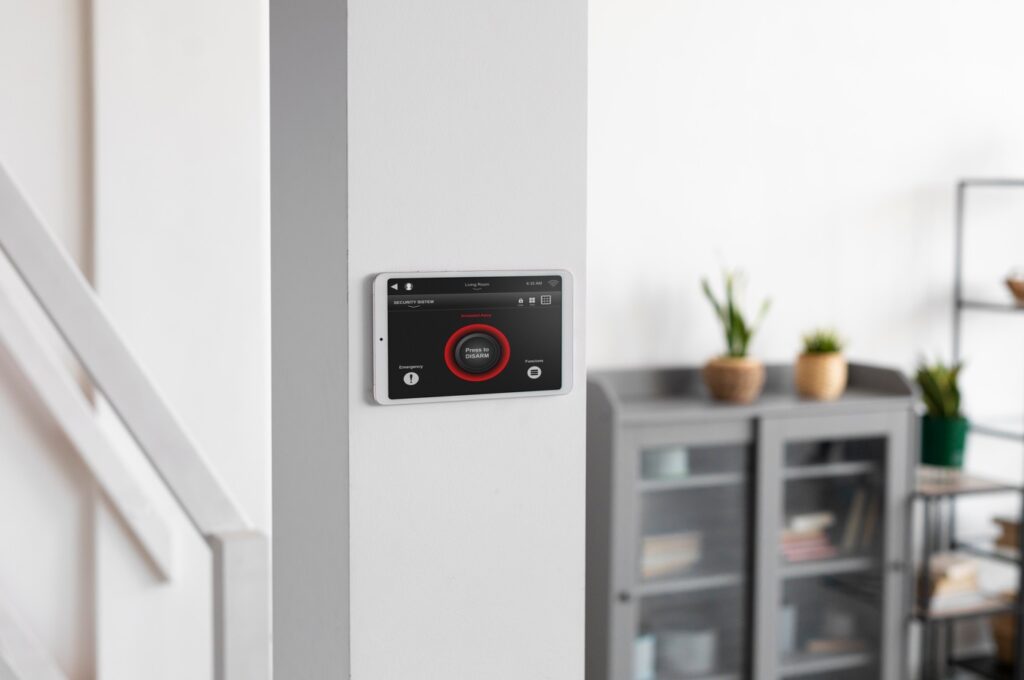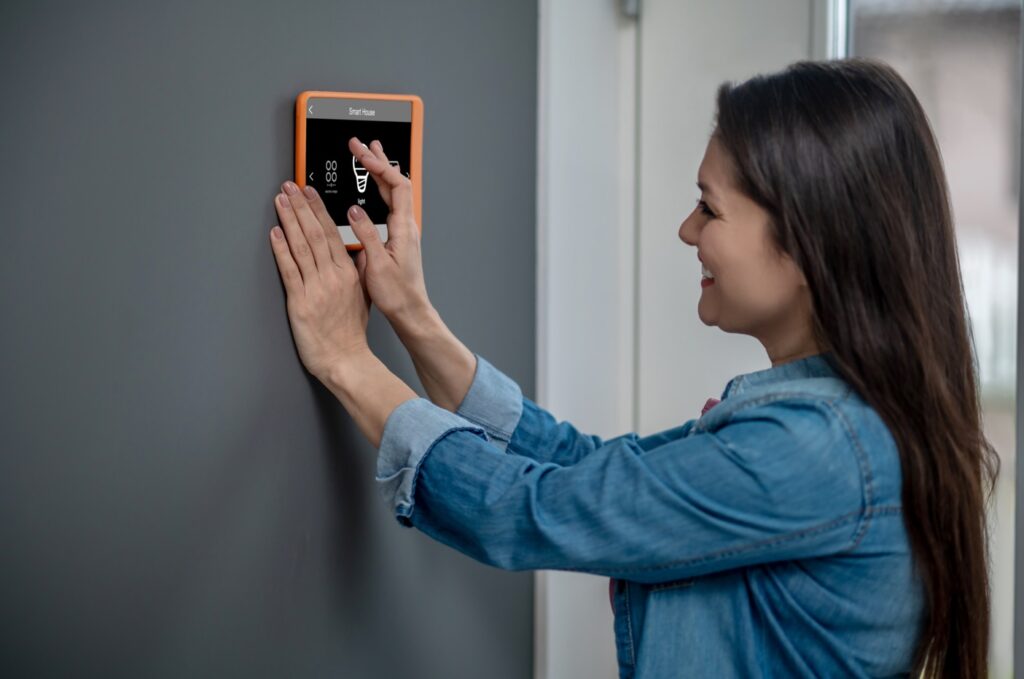Advancements in technology have revolutionized security and efficiency across numerous domains, notably in modern construction and architecture. With the continuous technological evolution of buildings, there arises a pressing demand for innovative access control systems, thus propelling the emergence of wireless door controllers.
The integration of wireless door controllers into building infrastructure presents a myriad of advantages tailored to the dynamic requirements of contemporary structures. In this comprehensive discourse, we delve into the paramount benefits of wireless door controllers, elucidating their pivotal role in reshaping access control paradigms within modern architectural landscapes. These controllers not only enhance security but also streamline operations, foster scalability, and facilitate seamless integration with other smart building systems, ushering in an era of unparalleled efficiency and convenience in building management.
1. Seamless and Cost-Effective Installation

One of the primary advantages of wireless door controllers lies in their ability to eliminate the need for intricate wiring and complex installation procedures, setting them apart from traditional wired systems. Unlike their wired counterparts, which necessitate extensive cabling and laborious setup, wireless controllers offer a seamless installation experience, effortlessly integrating into diverse locations within a building.
This streamlined installation process not only saves invaluable time during the construction phase but also holds the potential for substantial cost reductions. By opting for wireless solutions, businesses can mitigate the expenses associated with labor and materials typically incurred with wired systems. Furthermore, the flexibility of wireless controllers facilitates future modifications or expansions with minimal disruption and expense, underscoring their practicality and cost-effectiveness over the long term.
2. Enhanced Security
In alignment with the most current cybersecurity trends in the industry, wireless controllers are equipped with highly resilient encryption and authentication mechanisms, effectively fortifying against unauthorized access attempts. These sophisticated security measures render breaches nearly impossible, thereby bolstering the overall protection of the premises and its inhabitants.
Furthermore, wireless systems boast seamless compatibility with advanced biometric readers and cutting-edge video surveillance technologies. This seamless integration facilitates the establishment of a comprehensive security ecosystem, characterized by enhanced surveillance capabilities and heightened situational awareness.
By harnessing the power of wireless technology, businesses can establish a robust defense against potential threats, ensuring the integrity and confidentiality of sensitive data and resources. Wireless systems can seamlessly integrate with biometric readers and video surveillance, creating a comprehensive security network that safeguards the building and its occupants. As the cybersecurity landscape continues to evolve, wireless controllers remain at the forefront of innovation, offering unparalleled security solutions tailored to the dynamic needs of modern enterprises.
3. Scalability and Expansion
Buildings are frequently subject to expansions or renovations, driven by various factors such as accommodating new tenants, creating distinct zones, or integrating future-proof access features to meet evolving business requirements.
The versatility of a wireless door system contributes significantly to addressing these evolving needs. Offering unparalleled scalability and flexibility, wireless door controllers empower building managers to effortlessly add new access points without necessitating extensive infrastructure alterations. This scalability not only streamlines the integration of additional access points but also ensures that the building’s access control system remains agile and adaptable to changing circumstances, all while minimizing disruptions to daily operations. This adaptability positions wireless door systems as indispensable assets in the ongoing management and optimization of building access and security protocols.
4. Improved User Experience

In addition to scalability and flexibility, modern buildings prioritize convenience, and wireless door controllers excel in delivering an enhanced user experience. By leveraging mobile credentials, building occupants and authorized personnel can seamlessly access doors using their smartphones, eliminating the hassle of carrying physical keys or access cards.
Moreover, the convenience extends beyond the primary users, as individuals can easily share digital keys with visitors directly from their smartphones, bypassing the need for additional app downloads or physical key exchanges. This user-centric approach not only simplifies access management but also contributes to a positive perception of the building’s overall functionality, fostering a seamless and intuitive experience for all stakeholders. As technology continues to evolve, wireless door controllers remain at the forefront, continually enhancing convenience and user satisfaction within modern building environments.
5. Energy Efficiency
Sustainability stands as a paramount consideration in contemporary building design, and wireless door controllers emerge as pivotal contributors to optimizing energy usage. Through seamless integration with building automation systems, these controllers facilitate the implementation of sophisticated energy management strategies, effectively curbing unnecessary energy consumption.
This symbiotic relationship between access control and energy management not only serves to minimize the building’s carbon footprint but also yields tangible cost savings over time. By intelligently regulating access and ensuring that energy is allocated efficiently, wireless door controllers empower building managers to operate in a more sustainable manner while simultaneously enhancing operational efficiency and reducing overhead expenses. In an era where environmental consciousness is increasingly prioritized, the adoption of wireless door controllers represents a proactive step towards creating greener, more sustainable built environments for future generations.
6. Easy Maintenance
Unlike their traditional wired counterparts, wireless controllers boast enhanced resilience and longevity, requiring minimal maintenance and upkeep over time. This heightened durability stems from their streamlined design and reduced susceptibility to wear and tear, ensuring prolonged operational efficiency with minimal intervention.
Furthermore, the integration of remote diagnostics and monitoring capabilities further enhances the maintenance process, enabling building managers to remotely identify and address potential issues in real-time. This proactive approach not only minimizes downtime and disruptions but also facilitates timely resolution of maintenance issues, ultimately contributing to a smoother overall operation.
The combination of robust durability, remote monitoring, and proactive maintenance translates into tangible benefits for building owners and managers. By reducing the need for frequent repairs and interventions, wireless controllers help mitigate maintenance costs, extend equipment lifespan, and optimize operational efficiency, thereby enhancing the overall reliability and performance of the access control system.
7. Aesthetic Appeal

In addition to their functional benefits, wireless door controllers also make a significant impact on the visual aesthetics of a building. By eliminating the clutter of visible wires and conduits associated with traditional wired systems, wireless controllers contribute to a cleaner and more streamlined architectural aesthetic.
Moreover, wireless controllers offer a range of design options that can be customized to seamlessly integrate with the building’s overall design language and architectural elements. Whether discreetly hidden or elegantly showcased, these controllers can be tailored to complement the aesthetic vision of the building, enhancing both form and function in harmony.
This attention to detail not only enhances the overall visual appeal of the building but also reflects a commitment to meticulous design and craftsmanship. By seamlessly blending into the architectural landscape, wireless door controllers contribute to creating a cohesive and visually pleasing environment that leaves a lasting positive impression on occupants and visitors alike.
8. Rapid Response and Emergency Situations
In times of emergency, rapid response is paramount. Wireless door controllers offer a crucial advantage by facilitating swift actions to secure or unlock doors remotely, providing an efficient solution during critical moments. This capability enables building managers or security personnel to promptly respond to emergencies, helping to minimize potential risks and ensure the safety of occupants.
Moreover, wireless door controllers seamlessly integrate with emergency notification systems, allowing for clear communication and coordinated actions in crisis situations. By synchronizing access control with emergency protocols, these controllers enhance the effectiveness of emergency response efforts, enabling a quick and coordinated approach to managing unforeseen events.
This heightened level of responsiveness significantly improves the safety and security of building occupants, equipping modern buildings with the tools and capabilities needed to effectively handle emergencies. By leveraging wireless door controllers in emergency preparedness strategies, buildings can enhance their overall resilience and safeguard the well-being of those within their premises.
FAQs
1. What are wireless door controllers?
Wireless door controllers are advanced access control systems that allow for the remote locking and unlocking of doors without the need for physical wiring connections. They utilize wireless technology to communicate with access points, providing enhanced security and flexibility in modern building environments.
2. How do wireless door controllers enhance security?
Wireless door controllers employ robust encryption and authentication mechanisms, making unauthorized access nearly impossible. They can seamlessly integrate with biometric readers and video surveillance systems, creating a comprehensive security network that safeguards the building and its occupants.
3. What are the benefits of wireless door controllers for building scalability?
Wireless door controllers offer unparalleled scalability and flexibility, allowing for the easy addition of new access points without the need for extensive infrastructure changes. This ensures that a building’s access control system can adapt to changing needs without disrupting daily operations.
4. How do wireless door controllers improve user experience?
Wireless door controllers deliver an enhanced user experience by enabling mobile credentials, allowing building occupants to access doors effortlessly using their smartphones. Users can also share digital keys with visitors without the need for app downloads, enhancing convenience and overall functionality.
5. How do wireless door controllers contribute to energy optimization?
By integrating with building automation systems, wireless door controllers help optimize energy usage by reducing unnecessary consumption. This synergy between access control and energy management not only reduces the building’s carbon footprint but also translates into tangible savings over time.
Conclusion
The advent of wireless door controllers marks a significant milestone in the evolution of access control within modern buildings. Offering a plethora of advantages encompassing streamlined installation processes, fortified security measures, scalable functionalities, and energy-efficient operations, these controllers have emerged as indispensable assets for architects, building managers, and occupants alike, revolutionizing the way access is managed and ensuring seamless integration with the ever-evolving needs of contemporary building environments.







